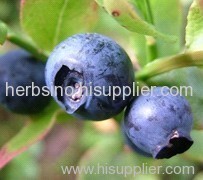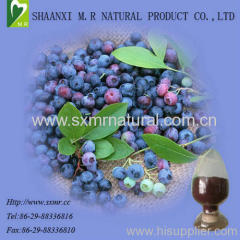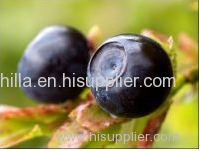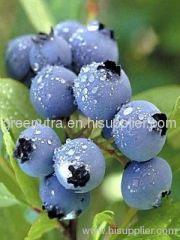.jpg)
bilberry extract
Company Profile
| Location: | China (Mainland) |
|---|---|
| Business Type: | Manufacturer |
Product Description
1. Sources and Habitat
Bilberries are basically the European version of the American blueberry. Bilberries are grown in Europe, Canada and the U.S. and extracts of the ripe berry are known to contain flavonoid pigments known as anthocyanins - which act as powerful antioxidants.
Specifications:Anthocyanosides 25% by HPLC
Anthocyanosides mainly include: glucoside wtih Pelargonidin, Peonidin, Petunidin, Malvidin, Delphindin,
Cyanidin etc
4. Indications and Uses
Modern laboratory studies on bilberry fruit extracts have confirmed a number of activities including antioxidant effects, an ability to inhibit aggregation of blood platelets (reduce stickiness, hence a tendency to clotting of blood cells), produce a slight relaxation effect on vascular smooth muscles, and a possible role in reducing factors associated with chronic inflammatory diseases. Extracts of the fruit have also been shown in laboratory experiments to inhibit enzymes such as elastase, which can cause the degradation of collagen. This can lead to a reduction in factors associated with inflammatory conditions such as atherosclerosis, pulmonary emphysema, and rheumatoid arthritis.
5. Safety Concerns
Under recommended intakes, bilberry extract is safe. In some cases, it may even be recommended for use during pregnancy for prevention and treatment of varicose veins and hemorrhoids. ALL women, however, who are pregnant or breastfeeding should check with her personal physician before taking this, or any, dietary supplement.
6. Dosage Information
You can get all the anthocyanins you need by eating ½ to 1 cup of fresh bilberry or blueberry with your breakfast. Standardized extracts are often more convenient, where doses should approximate 100 – 500 mg per day (25% anthocyanosides) in 2 to 3 divided doses.







